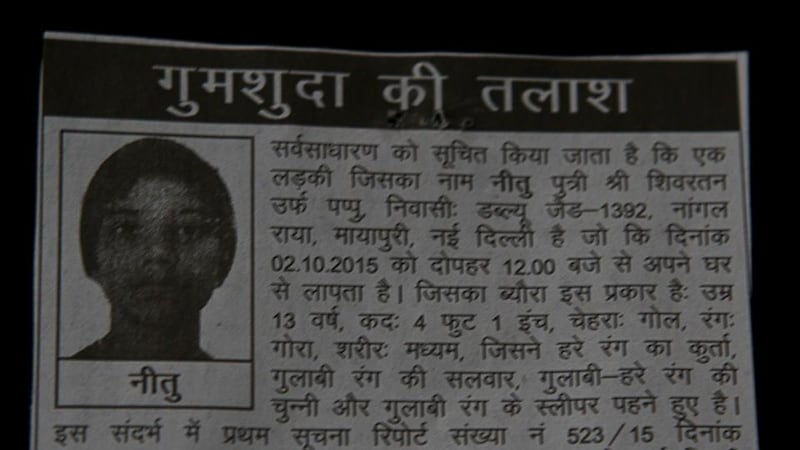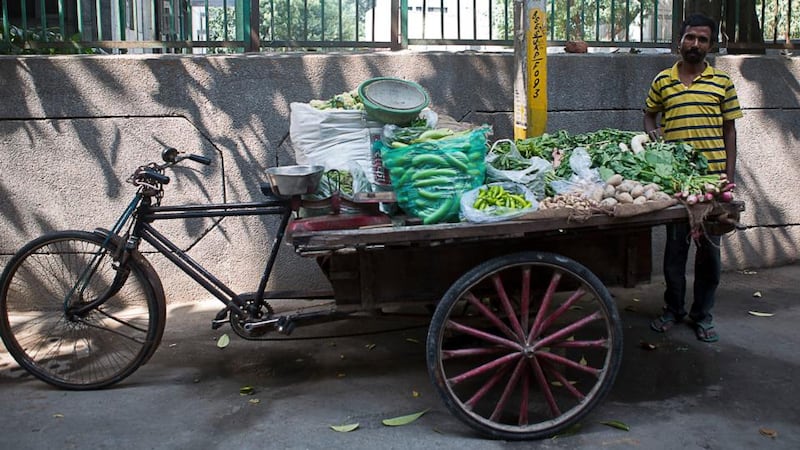Missing children. Two words that conjure up possibly the most dread a parent can feel. Between January and June of this year, 3,889 children went missing in Delhi, the capital of a country with a population of 1.28 billion. The figures were delivered in June by minister of state for home affairs, Haribhai Parathibhai Chaudhary. That’s an average of 21 every day.
During a 12-day reporting assignment last month, I first became aware of the extent of missing children via the pages of the national newspapers. All three that I read – the Times of India, the Indian Express, Hindustan Times – carried ads relating to some of those missing children and minors under 18. They usually featured a photograph of the missing person and details of where they had disappeared from, and which police station to contact with information.
There are many things non-Indian citizens have to get our heads around in this country. Think about a situation where a score of children routinely vanish in our capital city every day, all year round. It is unthinkable.


Although in many ways India is economically and technologically advanced, millions live in dire poverty. As Amitabh Kumar of Delhi NGO the Centre for Social Research tells me, “when you are hungry, you are a very different human being”.
Kumar explains why human trafficking is so common in India. “Human trafficking is an industry where you need zero investment,” he says. “Morality and ethics are wonderful words once your stomach is full, and when you have clothes on your back. But all your basic instincts to survive rise up when you are hungry. These are households where people have never seen a 100-rupee (€1.40) note in their lives. Daughters get sold. The person who sells them thinks, ‘If I don’t do this, I will not get money from anywhere’.”
On the trail of Neetu
The photographer I am working with in Delhi, Natisha Mallick, also acts as a translator, and she has access to a driver. We spend two full days driving around western suburbs of Delhi, following up on some of the police notices of missing children and girls I have cut from the newspapers left outside my hotel room every morning.
The first missing person I go to investigate is Neetu Shivratan (13), who disappeared from her home in the suburb of Mayapuri less than a fortnight before. The notices give the father’s name and their home address.
As we drive to Mayapuri, I ask Mallick, a native of Delhi, what she thinks has happened to the missing 13-year-old. “She has been trafficked for sure,” she says. “Someone must have picked her up.”
Her assurance is deeply disturbing.
“Boys go missing too, not just girls,” she says. “The boys, they cut their hands off and make them beg. There are very big gangs doing this kind of kidnapping.”
She tells me a story about a recent case where CCTV in a Delhi railway station caught men kidnapping sleeping children from their sleeping parents as they waited for their trains. “In this country, you cannot take your eyes off your kid for even one minute.”
One small room
We reach Mayapuri, leave the car, and walk down alleys, Mallick asking people as we go for the address. Neetu’s home is one small, filthy room, virtually bare of furniture and anything else, apart from a wooden bench. It is in a street with open drains. Until she disappeared, she lived in this room with her parents and four younger siblings. All her family are home when we arrive, and her parents seem entirely unfazed by our unannounced arrival. They agree to talk to us. Several neighbours and children gathered round to listen.
I don’t know what I had expected. I had vaguely assumed that if we found the address, we would find a household in crisis. Neetu’s parents readily pose for photos. Her mother laughs as she talks about her missing daughter.
Mallick translates: “Neetu went to the washroom at 10am and she never came back.” Her mother says she had been gone only two minutes when she went to check on her, because she had “a bad feeling”. Then, later in the interview, she revises this timeline, saying Neetu had been gone an hour before she went to look for her. Neetu, like her other siblings, did not go to school.
Her father, whose vegetable cart supports the family, has been at the wholesale market. His cart is across from their home, piled with chillies, cauliflower, spinach, okra, aubergines. He had been gone an hour, maybe two – he isn’t sure – when he came back to find Neetu had disappeared.
Because the family home is all in one room, they use a toilet and tap elsewhere on the alley where they live; “the washroom”, as Neetu’s mother calls it. I ask to see the washroom Neetu disappeared from.
She walks past a man lying in the room and out the opposite side, which leads into a tiny courtyard with a toilet and a tap. It is fully enclosed by walls. The only way out is back through the room where the man is lying, and then you are standing outside the family home once more. How could someone have taken Neetu from this virtually enclosed space without being seen or heard by anyone on the street?
I ask her parents if they are very upset about their missing daughter. Her father says his main concern is selling his vegetables so they can make their rent; that they only moved to Delhi from their village two months ago. Her mother shrugs, her expression blank.
Then she says, “We have other children”. Then, laughing, “I am crying all the time”. I am not sure if they have understood the question, so I ask Mallick to put it to them again in Hindi. The same answers come back a second time.
I ask what they think has happened to Neetu. Her father says, “Neetu had a fight with her mother that morning, so maybe she has run away.”
Back in the car, Mallick asks me what I think. I tell her I have no idea how anyone could just vanish from that enclosed washroom space. I cannot believe a 13-year-old girl would voluntarily run away in a city she does not know, with no friends or family to go to, no literacy and no money. She has been missing almost a fortnight now.
Trafficking patterns
Whatever the fate that met Neetu, there are patterns to child trafficking in India. There have been cases of very poor families selling their daughters, especially those “of tender ages”, Mallick says, pointing out that very many of the missing-girls notices we have studied refer to girls of 13, 14 and 15. “I think that is why they moved to the city: because nobody knows them here,” she says. “It was planned.”
“If Neetu had been trafficked, her mother could simply have walked her to the end of the alleyway and given her over to someone else, making any excuse at all to her daughter: ‘This person will show you something/take you to get something we need.’ ”
The next day we check out the addresses on three notices. We find the right address in Brahmapuri for the home of Amreen, who went missing in March, aged 13. However, neighbours says the family have since moved away.
The next house we find is that of Priyanka (20), who has been missing since September 17th. Priyanka’s cousin, who lived upstairs with her family, comes to speak to us. She speaks Hindi and English to us. No, we cannot come in. No, nobody can talk to us. No, they have nothing to say. I ask, as we are getting the door closed in our faces, if she is very upset about her missing cousin. She says nothing, but I am taken aback by the expression of raw fury on her face.
At the next and last house we go to – the home of Ritika (17) in Khayala – the missing girl’s aunt talks to us about her. She has been missing since September 20th. “She eloped with her Muslim boyfriend,” the aunt says.
“Do you want to go and look for more families of missing children?” Mallick asks. She means very young girls. I don’t. I can’t help wondering where Neetu is now and what is happening to her.
- This article was supported by a grant from the Simon Cumbers Media Fund








